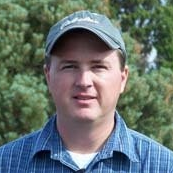Ecohydrologic Feedbacks between Vegetation, Soil, and Climate
A special issue of Water (ISSN 2073-4441). This special issue belongs to the section "Water Quality and Contamination".
Deadline for manuscript submissions: closed (1 May 2020) | Viewed by 25649
Special Issue Editors
Interests: ecohydrology; erosion; fire effects; plant community dynamics; wildland hydrology; infiltration and runoff
Special Issues, Collections and Topics in MDPI journals
Interests: soil physics, soil erosion, land degradation and water quality, surface and subsurface hydrology, environmental sensing and monitoring, soil quality and environmental sustainability, modeling and computational tools in soil erosion and hydrology
Special Issue Information
Dear Colleagues,
Patchy attributes of water-limited lands provide unique landscapes for studying the dynamic interaction of structural and functional connectivity that governs hillslope hydrologic and erosion processes. For example, runoff and erosion from well-vegetated landscapes are low due to spatial heterogeneity in infiltration, runoff, and sediment detachment/deposition. Isolated bare patches are sources for runoff and soil detachment by rainsplash and sheetflow. Vegetated patches and ground cover intercept rainfall and overland flow, promote infiltration and sediment and nutrient retention, and protect the soil surface from raindrops and detachment by flow. Plant community degradation often increases runoff and soil loss through the fragmentation of the vegetation and ground cover patch-structure. Such increases in structural and functional connectivity (e.g., woody plant encroachment) often propagate long-term site degradation and are difficult to reverse. Disturbances (e.g., fire, drought) can potentially serve as ecohydrologic threshold reversal mechanisms by which the vegetation structure and ecohydrologic function are reset through ensuing plant community and ecohydrologic dynamics. This Special Issue aims to explore such unique relationships for water-limited landscapes around the globe. We seek papers that examine key ecohydrologic feedbacks between vegetation, soil, and climate and are particularly interested in how such relationships are affected by disturbances, immediate or transitional.
Dr. C. Jason Williams
Assit. Prof. Kossi Nouwakpo
Guest Editors
Manuscript Submission Information
Manuscripts should be submitted online at www.mdpi.com by registering and logging in to this website. Once you are registered, click here to go to the submission form. Manuscripts can be submitted until the deadline. All submissions that pass pre-check are peer-reviewed. Accepted papers will be published continuously in the journal (as soon as accepted) and will be listed together on the special issue website. Research articles, review articles as well as short communications are invited. For planned papers, a title and short abstract (about 100 words) can be sent to the Editorial Office for announcement on this website.
Submitted manuscripts should not have been published previously, nor be under consideration for publication elsewhere (except conference proceedings papers). All manuscripts are thoroughly refereed through a single-blind peer-review process. A guide for authors and other relevant information for submission of manuscripts is available on the Instructions for Authors page. Water is an international peer-reviewed open access semimonthly journal published by MDPI.
Please visit the Instructions for Authors page before submitting a manuscript. The Article Processing Charge (APC) for publication in this open access journal is 2600 CHF (Swiss Francs). Submitted papers should be well formatted and use good English. Authors may use MDPI's English editing service prior to publication or during author revisions.
Keywords
- ecohydrology
- disturbance
- erosion
- fire
- drought
- drylands
- rangelands
- runoff
- woodlands
- woody plant encroachment






